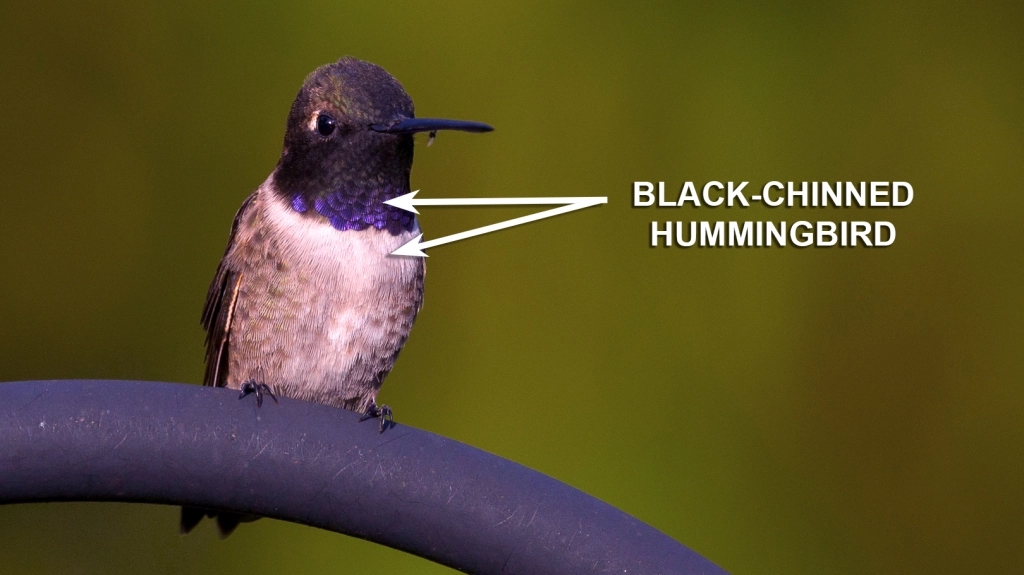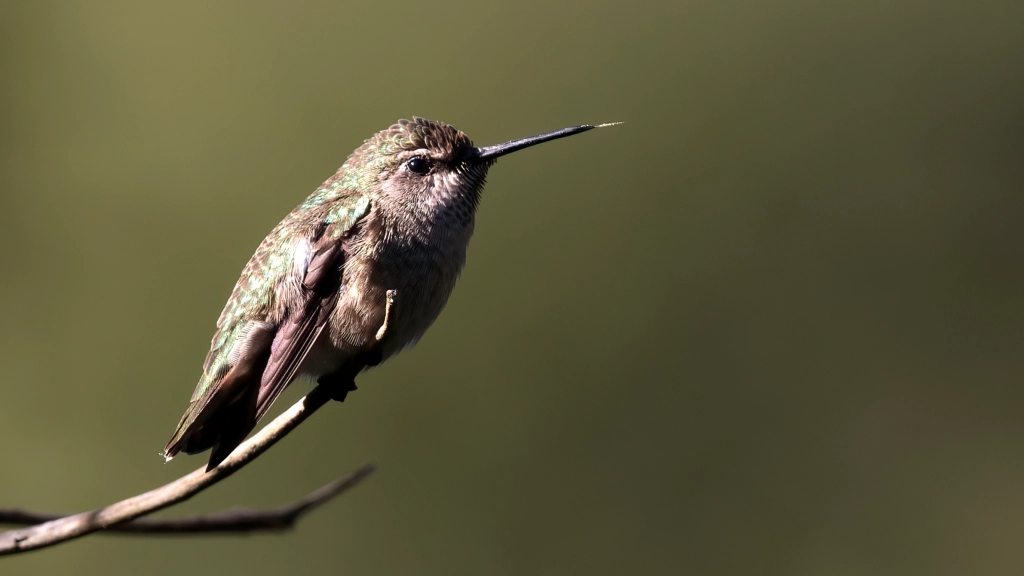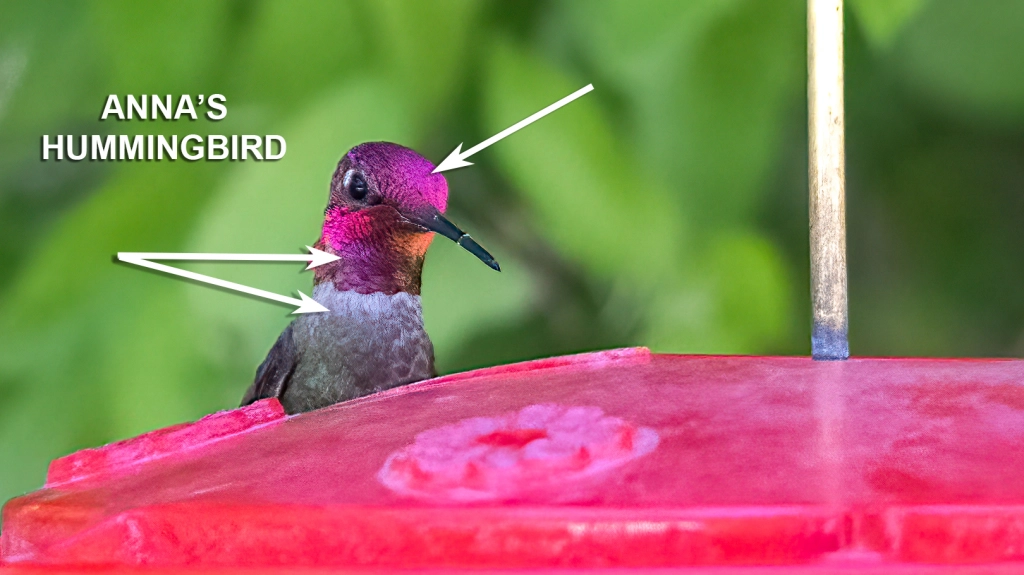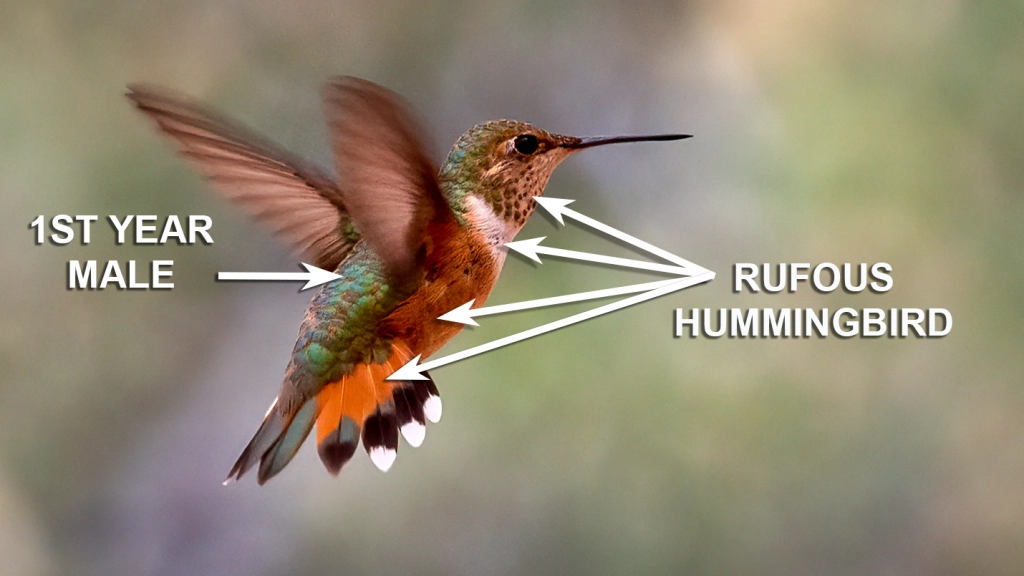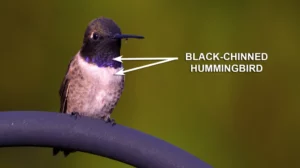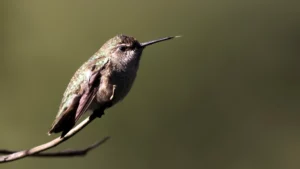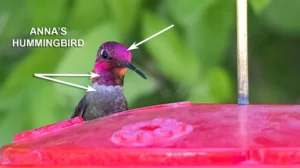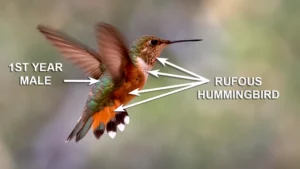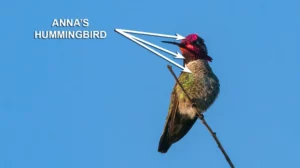
Jim Gain calls Anna’s Hummingbird, the second in the “Learn 100 Birds” series, a “three-fer” because it illustrates one of the basic tactics for building a local birding list. This tactic involves knowing a birding fundamental: Learn the most common bird and you will often also learn one or two other similar but less common birds. The Anna’s Hummingbird offers a classic case. In the San Joaquin Valley, if you see a hummingbird, the high probability is that it’s an Anna’s Hummingbird, because this is by far the most common species. The second and third most common are Black-chinned and Rufous Hummingbirds. Learn the Anna’s and when you see something that doesn’t fit its field marks, the next likely species is Black-chinned, followed by Rufous. Did we say you’re going to need binoculars? There are lots of used bargains on Ebay and you will need them if you want to experience the special joy of hummingbirds up close. See more of Jim’s fine work here.
This is a three-fer post featuring the three most common hummingbirds, Anna’s, Black-chinned and Rufous that are likely coming to your feeders right now (summer). When viewed in direct sunlight with their resplendent gorgets in full glory, few birds elicit a reaction quite like male hummingbirds do. Females are drabber and harder to identify.
The hummingbird represents an ancient symbol of joy and happiness. Its colorful appearance brings good luck and positive energy to our lives.
Let’s start with the most common one, Anna’s Hummingbird.
ANNA’S HUMMINGBIRD
STATUS: Anna’s Hummingbirds are Common Year-round Residents of the San Joaquin Valley and are frequently found at backyard feeders. Most hummingbird species, like Anna’s, Black-chinned and Rufous, are sexually dimorphic with the males having the boldest and easiest to identify markings. At 3.9 inches in size, Anna’s Hummingbirds are the largest of the three hummers in this post.
FIELDMARKS: Adult male Anna’s Hummingbirds feature a bold pinkish-ruby gorget (throat patch) that is subtended (bordered along the bottom) by a grayish-white breast. The pinkish-ruby feathers also appear on the top of their head.
Females and first-year male Anna’s Hummingbirds are more challenging as they lack the pinkish-red gorget and head feathers.
Three Valley Hummingbirds
BLACK-CHINNED HUMMINGBIRD
STATUS: The Black-chinned Hummingbird is a Fairly Common Summer Visitor, arriving in mid-April and hanging around the Valley until mid-September. At 3.5 inches, the Black-chinned Hummingbird is slightly smaller than the Anna’s Hummingbird. The Black-chinned Hummingbird is the second-most likely hummingbird that residents will encounter of the 6 hummingbird species that have visited the San Joaquin Valley.
Throughout the Valley, this species is widespread in many habitats at low elevations, often coming into backyard gardens and nesting. Other hummingbirds may stay through the winter, at least in small numbers, but the Black-chinned Hummingbird is almost entirely absent from the valley in winter.
FIELDMARKS: The Black-chinned has a thinner, longer and straighter bill than both the Anna’s and Rufous hummingbirds. It is metallic green above and dull grayish-white below. They are best identified by their smallish gorget that is bordered by a pure white throat. Their gorget tends to look solid black unless viewed straight-on in good light, when the lower edge takes on a glowing purple hue.
As with the other hummingbirds featured in this post, females and first-year males lack the colored gorget and make identification a challenge that is best left for the experts.
RUFOUS HUMMINGBIRD
STATUS: The Rufous Hummingbird is a Fairly Common Spring & Fall Migrant as it travels between its wintering grounds in Mexico to its nesting territory in Canada. It can be seen visiting feeders in March and April and again on its return journey from mid-July to mid-September. At 3.3 inches, the Rufous Hummingbird is the smallest of the three hummingbirds featured in this post.
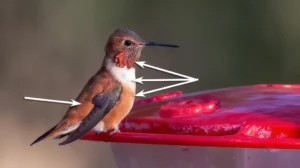
The Rufous Hummingbird is North America’s “extremist” hummingbird, venturing far from the equatorial tropics, it reaches the northernmost latitude of any hummingbird (61° N). (From Birds of the World)
FIELDMARKS: The Rufous Hummingbird stands out from Anna’s and Black-chinned by the bold rufous coloration on its belly, back and tail feathers. It has a white throat and adult males have a brownish-red gorget. First year males tend to have greenish instead of rufous feathers on their backs.
Remember, learn the Anna’s Hummingbird first. It’s by far the most likely hummingbird you’ll see in the Valley today, but if you see a hummingbird that doesn’t match its field marks, study closely to see whether it’s a Black-chinned or Rufous Hummingbird. There are other possibilities, but they are far less likely. Most of all, let the hummingbird fulfill its role of bringing joy and happiness. That’s really what birding is all about.

